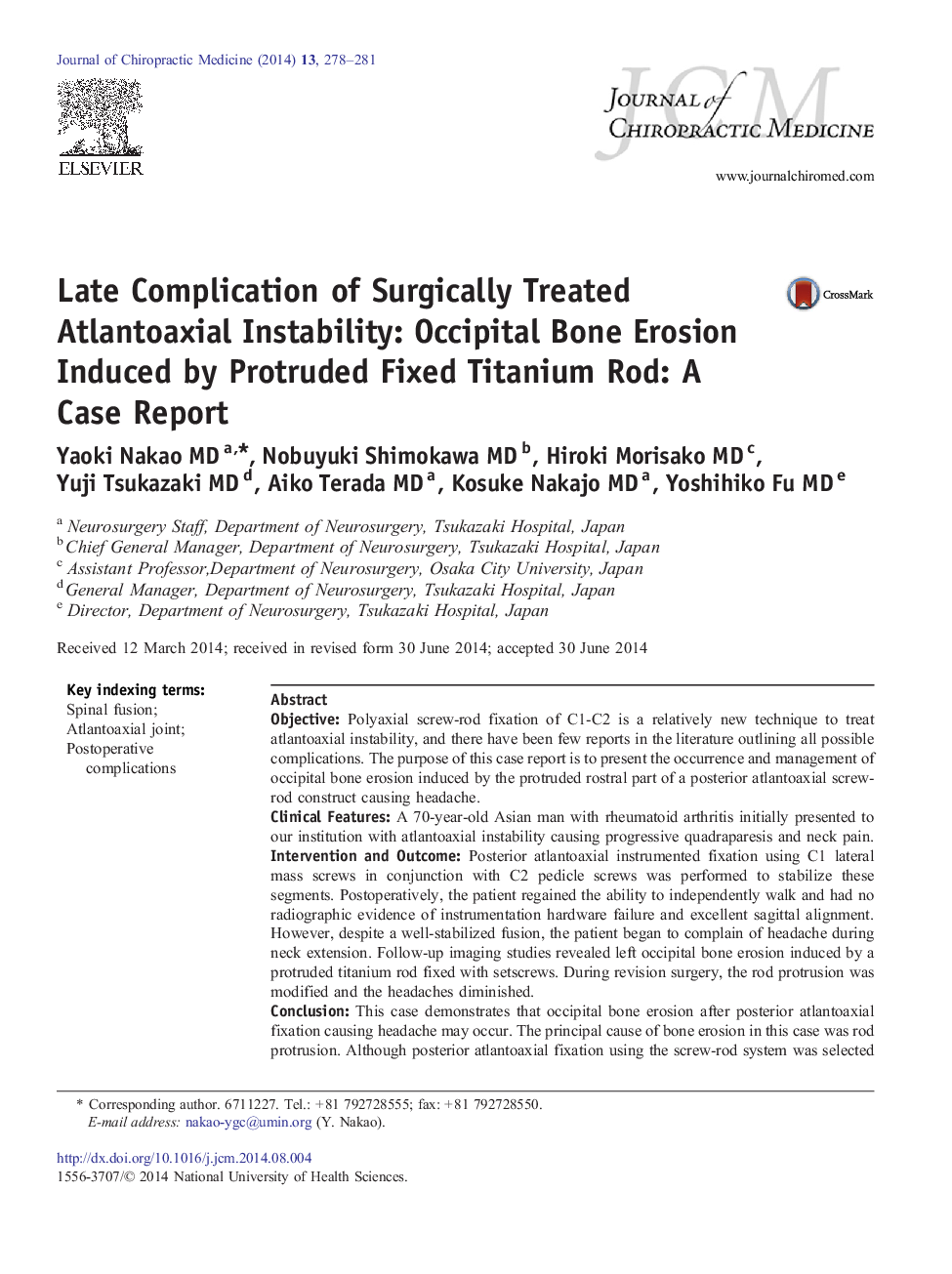| کد مقاله | کد نشریه | سال انتشار | مقاله انگلیسی | نسخه تمام متن |
|---|---|---|---|---|
| 2620043 | 1135561 | 2014 | 4 صفحه PDF | دانلود رایگان |

ObjectivePolyaxial screw-rod fixation of C1-C2 is a relatively new technique to treat atlantoaxial instability, and there have been few reports in the literature outlining all possible complications. The purpose of this case report is to present the occurrence and management of occipital bone erosion induced by the protruded rostral part of a posterior atlantoaxial screw-rod construct causing headache.Clinical FeaturesA 70-year-old Asian man with rheumatoid arthritis initially presented to our institution with atlantoaxial instability causing progressive quadraparesis and neck pain.Intervention and OutcomePosterior atlantoaxial instrumented fixation using C1 lateral mass screws in conjunction with C2 pedicle screws was performed to stabilize these segments. Postoperatively, the patient regained the ability to independently walk and had no radiographic evidence of instrumentation hardware failure and excellent sagittal alignment. However, despite a well-stabilized fusion, the patient began to complain of headache during neck extension. Follow-up imaging studies revealed left occipital bone erosion induced by a protruded titanium rod fixed with setscrews. During revision surgery, the rod protrusion was modified and the headaches diminished.ConclusionThis case demonstrates that occipital bone erosion after posterior atlantoaxial fixation causing headache may occur. The principal cause of bone erosion in this case was rod protrusion. Although posterior atlantoaxial fixation using the screw-rod system was selected to manage atlantoaxial instability because it has less complications than other procedures, surgeons should pay attention that the length of the rod protrusion should not exceed 2 mm.
Journal: Journal of Chiropractic Medicine - Volume 13, Issue 4, December 2014, Pages 278–281